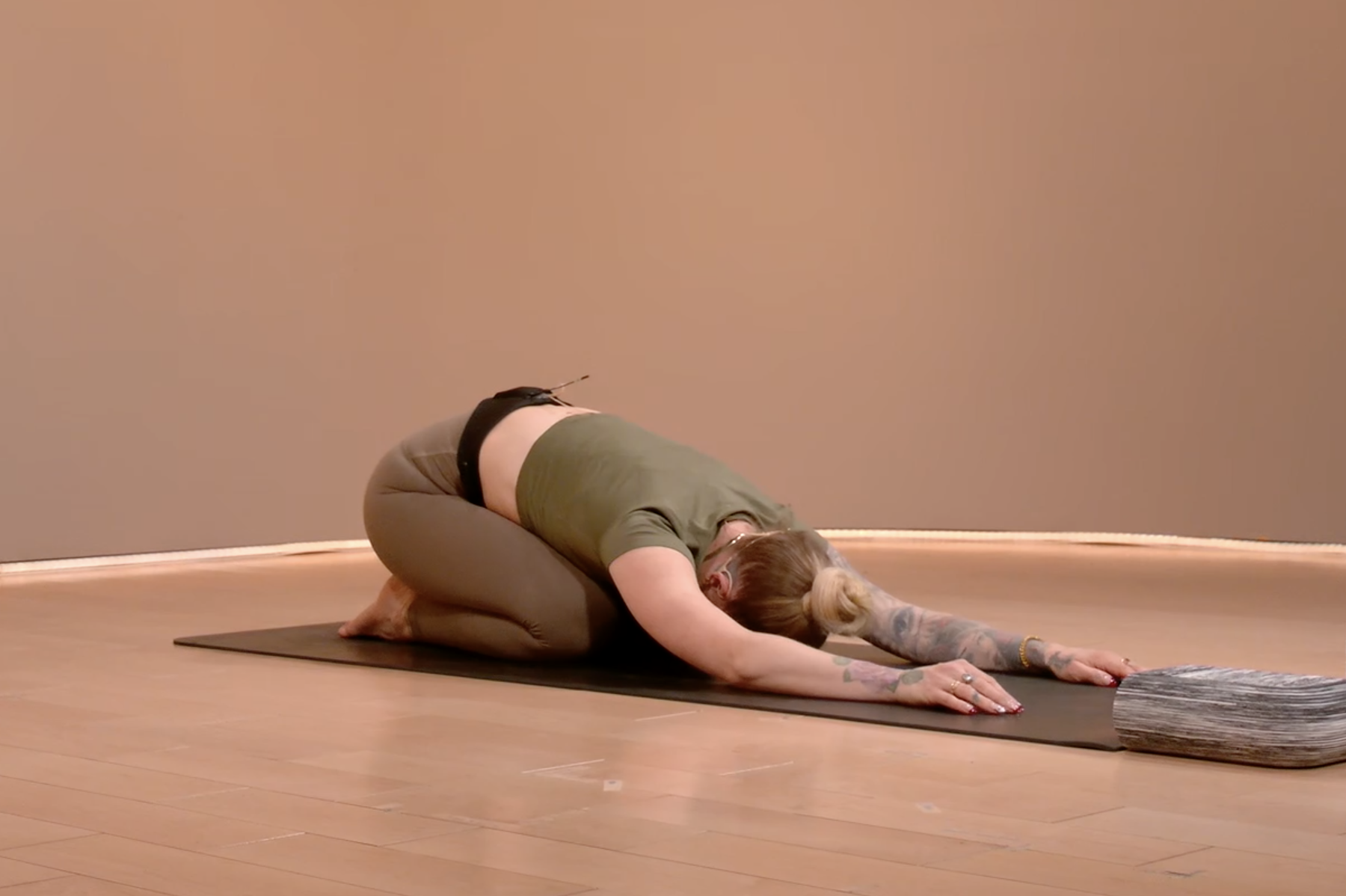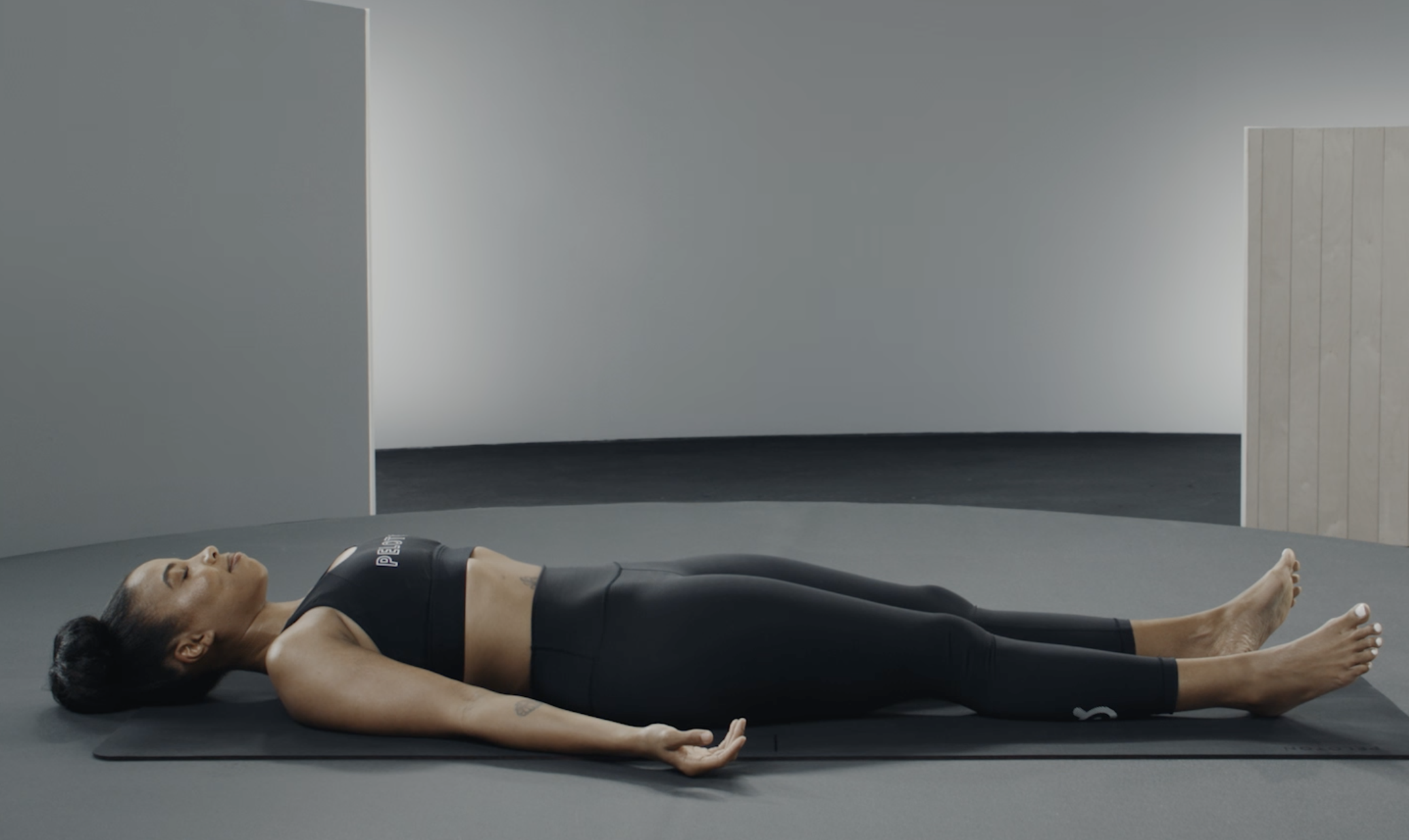
©Jojo Jovanovic/Stocksy United
How to Practice Child's Pose
It's time to drop into this restorative posture.
By Elizabeth Millard•
What Is Child's Pose (Balasana)?
The Benefits of Child's Pose
How to Practice Child's Pose
Common Mistakes to Avoid When Practicing Child's Pose
Alternatives to Child's Pose
Key Tips for Child's Pose
Everyone needs a restful break sometimes—even in the middle of a yoga class. To help you reset, many yoga instructors often turn to Child's Pose, which can spur a restorative moment. However, this pose isn't just for catching your breath in the midst of a particularly active flow. There are several benefits that may prompt you to continuously turn to this posture, on and off the mat.
What Is Child's Pose (Balasana)?
Child’s Pose, known as Balasana in Sanskrit, is typically used as a resting pose between other postures, says Kirra Michel, a Peloton instructor. However, it doesn't need to be part of a yoga class, she adds.
"It can be used as much as needed within the practice, or any time off the mat when the practitioner wants to ground and calm themselves down and go into more of an introspective mindset," she says.
The Benefits of Child's Pose
In addition to offering a quick reset during a class (or in the midst of a chaotic day), this pose has other benefits, including:
Strategic Muscle Release
This posture stretches your neck, lower back, thighs, and ankles, while also releasing your hips, Kirra says. These are key areas that tend to get tight during the day, especially your neck and back.
Engages Your Parasympathetic Nervous System
"Like all restorative yoga poses, Balasana promotes relaxation,” she says. It slows down your parasympathetic nervous system, allowing your body to stretch and relax, she adds.
Quick anatomy refresher: Your sympathetic nervous system drives the "fight or flight" response and fires up during times of stress. By contrast, your parasympathetic nervous system is your "rest and digest" control mechanism. By promoting the latter, Child’s Pose can help you relax and destress.
Improves Heart Health
Child's Pose also offers benefits for your cardiovascular health. A 2017 study of medical students published in the National Journal of Physiology, Pharmacy and Pharmacology examined the effects of practicing Balasana for five minutes every day for 90 days.
At the end of that timeframe, students who consistently did the pose had improved cardiovascular measures, including lower blood pressures and resting heart rates.
Accessibility
There are certain yoga poses that may be particularly challenging if you haven’t worked up to them. For example, an arm balance, such as Crow Pose, requires you to build arm and core strength over time before practicing the posture.
In comparison, Child’s Pose is a more accessible posture, says Carol Mack, a physical therapist and strength and conditioning coach in Cleveland, Ohio.
Child’s Pose can help build your confidence and ease you into a class, she says. It can also offer a good way to pause during an active sequence if you feel like you need a break. That can be a relief for many—knowing you have a go-to posture that you can drop into at any point.

How to Practice Child's Pose
Whether you're in a class or at home, here's how to come into this forward fold.
Come to your hands and knees on the mat.
Spread your knees as wide as your mat. Keep the tops of your feet on the floor with your big toes touching.
Press your hips back. Your butt should either rest on the floor or just above your feet.
Rest your belly between your thighs. Place your forehead on the floor. You can also stack your hands in front of you and rest your forehead on top of them if that's more comfortable.
If you're not stacking your hands, stretch your arms in front of you with the palms toward the floor or with palms facing up toward the ceiling, whichever feels better to you.
As you stay in this pose, pay attention to your breath, making sure to soften during the exhales.
Common Mistakes to Avoid When Practicing Child's Pose
Like with any yoga pose, physical and mental reactions can differ from one student to another. For example, if you have knee or hip issues, you may find Child’s Pose uncomfortable and can only stay in it for a few seconds before wanting to shift to another posture, while someone else may want to linger in it for 10 minutes.
This type of forward fold can also prompt mental discomfort for some. For instance, you may experience racing thoughts and increased anxiety the longer you hold the pose, even though it's supposed to be relaxing. That can be particularly true if you find yourself holding your breath in the posture.
Because of that, the most common mistake is to stay in the pose because you think you should—even if it's causing tension in your body or mind.
Alternatives to Child's Pose
If you experience a rising sense of panic or any pain or tightness, carefully come out of the pose and choose a different one that feels more restorative. Here are some alternatives to Child’s Pose:

1. Supine Twist
If Child's Pose makes you feel particularly anxious, lying down may help ease those feelings. Additionally, a twist can help release muscle tension.
Lie down on your back and bend your knees. Place the soles of your feet on the floor and position your arms in a T-shape, with your palms facing up.
Press into your feet to lift your hips slightly off the floor and shift them about an inch to your right. This helps your hips "stack" when you move into the twist, which takes pressure off your lower back. Lower your hips back down.
Cross your right leg over your left.
Let your legs drop gently to the left. Keep your right shoulder on the floor.
Stay in this position for 30 seconds to a minute, then come back up and recenter your hips while uncrossing your legs. Just as you did with the other side, lift your hips and shift them about an inch to your left. Lower back down.
Cross your left leg over your right, then let your legs drop gently to the right. Keep both of your shoulders on the floor.
Stay in this position for 30 seconds to a minute.
2. Supine Butterfly
If you'd rather not do a twist, try this other supine posture.
Lie on your back, bend your knees, and bring the soles of your feet together. Your legs should naturally fall open.
Bring your arms out to a T-shape. Face your palms up toward the ceiling to release your shoulders.
Close your eyes. Stay here for 30 seconds to a minute.

3. Savasana
This pose is usually reserved for the end of a yoga class, but you can also use it as an alternative to Child's Pose.
Lie on your back with arms in a T-shape or by your sides. Your palms should face up toward the ceiling.
You can also place one or both of your hands on your belly as a way to deepen your awareness of your breath. Let your legs relax.
Stay here for at least 30 seconds.
Related Articles
Key Tips for Child's Pose
As long as you're not experiencing any pain or discomfort, try playing around with how you position yourself in Child's Pose to see if there are slight modifications that work best for you. For example, you might prefer to widen your knees while keeping your big toes touching to see if that gives you more "room" for your belly or a deeper release in your hips. That type of widening may also alleviate any tension you feel in your lower back.
A major tip from Kirra: Make sure your breaths are deep and full. Some people feel a sense of constriction when they're in this type of forward fold, and as a result, they might breathe in a more shallow way, or even find themselves holding their breath. That can be counterproductive, since it may create more anxiety instead of promoting relaxation. Instead, focus on your breathing: Visualize softening on the exhale, which will help you go deeper into the pose.
You can also experiment with adding props, Kirra says. That might mean placing a blanket or bolster under your butt or putting a blanket in front of you to rest your forehead off the ground.
As you make minor adjustments, it's likely you'll find a sweet spot where your alignment—and the position of any props you're using—will help you find a deeper sense of relaxation, whether you're in the middle of a yoga class or just taking a well-deserved midday break.

Peloton App
Access thousands of classes with no equipment needed.
This content is for informational and educational purposes only and does not constitute individualized advice. It is not intended to replace professional medical evaluation, diagnosis, or treatment. Seek the advice of your physician for questions you may have regarding your health or a medical condition. If you are having a medical emergency, call your physician or 911 immediately.
Want to strengthen your yoga practice?
We can help. Enter your email to get articles, instructor tips, and updates from Peloton sent to your inbox.
By providing your email address, you agree to receive marketing communications from Peloton.
For more about how we use your information, see our Privacy Policy.










